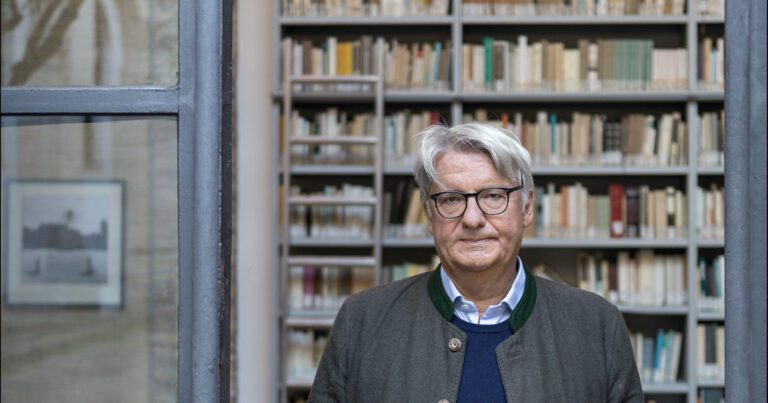For our themed column on Pavese’s contemporary critique, Iuri Moscardi interviewed Tommaso Munari, author of a recent essay on the history of Italian publishing.
Tommaso Munari obtained his PhD in Storia e civiltà from Istituto universitario europeo in Florence. His main field of research is the history of Italian publishing. The Einaudi publishing house was one of the main topics of his studies: he analyzed it in the two volumes Verbali del mercoledì (2011 and 2013); in the collection Centolettori. I pareri di lettura dei consulenti Einaudi (2015), which includes also one of Pavese’s editorial judgment; and L’Einaudi in Europa (2016), which analyzed how Einaudi developed its relationships with European publishers in the years immediately following the end of the Second World War. His most recent book is L’Italia dei libri. L’editoria in dieci storie, published in 2024.
In L’Italia dei libri. L’editoria in dieci storie you analyzed the history of the unified Italy – starting from the years immediately after the Unity until present days – by describing ten Italian publishers. How did you choose them
We can say that there are ten actors in a leading role – the publishers Zanichelli, Treves, Bemporad, Hoepli, Laterza, Mondadori, Einaudi, Feltrinelli, Adelphi, and Sellerio – and ten actors in a supporting role – the publishers Pomba, Le Monnier, Barbèra, Sonzogno, Salani, Macmillan, Gallimard, Bompiani, Maspero, and Boringhieri. They are surrounded by a significant number of extras, like Ricordi – which published music scores and librettos – and Touring Club Italiano – which specialized in tourist guides –, just to mention two of the most eccentric ones. I agree: this book is a history of Italy seen through the lens of publishing, but it is also the history of a specific job, the publisher, which around the mid-1800s found its own dimension in between the typographer and the bookseller. And I thought that the easiest way to describe this job was to focus on some case studies. This choice was due also to didactic reasons since the idea of this book came from a university course: on one side I wanted to piece together the history of the Italian publishing, and on the other I wanted to tell this story starting from archives and to avoid the risk of making it look like a “phone book”, which frequently happens with books like this one. The result was necessarily a compromise.
In your book you describe how these publishers contributed to unify the country: they needed readers, so they increased – especially with “popular” books – the number of readers. Despite this, it seems that this kind of research, built on data analysis, is considered less relevant compared to other, more “abstract” approaches. We study great authors and canonical books but we never wonder who their readers were, namely if they served their purpose. Am I right?
The problem is that studying the process of reading is as important as evasive. Who were the readers? What did they read? How did they read? These questions are difficult to answer because the sources documenting this process are limited, especially if we look back in time. Focusing on the 1800s and the 1900s, we can often date back to the number of editions, but not to circulation and selling. In the book, I have done everything I could. For instance, I studied the earliest registers of correspondence of the Laterza bookseller in Bari, which listed the orders made by Giovanni Laterza for his customers. Among them, a lot of school manuals, many novels for kids, some law handbooks, and only a few works of literature except for the three “crowns” Giosuè Carducci, Giovanni Pascoli, and Gabriele D’Annunzio. But this analysis concerns only a corner of Italy, in a small portion of a specific period. Another source I relied upon were the letters sent to Pellegrino Artusi by his women readers, who wrote him to book a copy of his Scienza in cucina, to receive clarifications about one of his recipes, or information about specific cooking tools. These letters, in the same way as Laterza records, show a precious cross section on the world of reading, but we can grasp only fragments or conjectures of this world. This does not mean that literature should not be studied in its social and economic elements.
In your studies, you repeatedly focused on the Einaudi publishing house. In my opinion, Einaudi has always been based on the work of single big names (Giulio Einaudi, Cesare Pavese, Leone Ginzburg, Elio Vittorini, Daniele Ponchiroli, and so on) rather than on a team. Is this so? What made Einaudi so different from other Italian publishers?
First of all, I have to specify that Einaudi has not always been characterized by his famous Wednesday meetings. At the beginning, its catalogue was modeled by Luigi Einaudi, the father of Giulio, a famous economist who created the first collection, Problemi contemporanei (Contemporary Problems) with many books, all political economy manuals. After that, Leone Ginzburg and Cesare Pavese came and introduced History (Biblioteca di cultura storica, Collection of Historical Culture) and Literature (Narratori stranieri tradotti, Foreign Narrators in Translation), while Einaudi mostly promoted essays. The group started to increase its members in the early 1940s with Carlo Muscetta, Mario Alicata, Giaime Pintor, followed by Felice Balbo, Norberto Bobbio, Antonio Giolitti, Massimo Mila, and Franco Venturi. At the end of that decade, the group was so big that recurrent weekly meetings became a necessity. For sure this “group decision” has been one of the characteristic marks of the publisher, but I think that its most important trait was “reasoning by collections”: this means to build the catalogue as a huge library, on one side, and to conceive books as parts of the same discourse, on the other.
Pavese worked at Einaudi in its earliest phase, when the publisher opened to the world but remained a semi-artisanal and Piedmontese company. What was Pavese’s main role within Einaudi? Do you think that he could have made his contribution to the company even in a world that, starting from the 1960s, had totally changed compared to the one where Pavese was born?
Making History on what-ifs is extremely difficult. For sure, when Pavese died Einaudi did experience a void, not as much ideational but rather organizational. Natalia Ginzburg wrote that Pavese “was holding everything”; I would add that Pavese was able to do everything. As his correspondence showed, Pavese was able to negotiate with authors, review a translation, proofread, choose a title, prepare the cover information, discuss with the typographers. He knew how to turn a text into a book and how to promote it. This huge competence of him made him unreplaceable within the 1940s artisanal Einaudi. Few years later, the publisher would have become a more structured company as part of a more complex industry, but Pavese would have inevitably changed together with them, although we don’t know how. The fact remains that he left his legacy at Einaudi and had at least one talented heir: Italo Calvino.
Do you think that distinguishing between “pure” and “commercial” publishers makes sense for a category that has to combine spiritual and market needs?
I agree: the distinction between cultural publishers and consumer publishers is stale and too abstract. A publisher is a company that needs to deal with the market, sometimes by creating it and some other times by following it. There surely are publishers that pay more attention to the intellectual coherence of their catalogues and the quality of single books, but in the end it’s readers who determine the success or the failure of their choices. The last decades, on the contrary, have witnessed the development of an academic publishing that relies upon different premises: they do not focus on readers but rather on authors, who publish their books thanks to economic contributions from cultural institutions or university departments. From this perspective, selling copies is not so relevant.
“Un Pavese ci vuole”: this misquotation from a very famous passage from The Moon and The Bonfires was the title of a series of video-interviews I conducted with the director of Fondazione Pavese, Pierluigi Vaccaneo. Seventy-three years after Pavese’s suicide, do we still need him? And, whether yes or no, why?
The publishing industry would need him as a model not only of dedication, but also of intellectual curiosity. The Collezione di studi religiosi, etnologici e psicologici (Collection of Religious, Ethnological, and Psychological Studies) that he created in 1945 remains one of the most relevant collections of the 1900s because of its coherence and originality. At a time when the ideas of Benedetto Croce were still dominant, Pavese not only understood the cultural novelty expressed by authors such as Georges Dumézil, Mircea Eliade, Leo Frobenius, Károly Kerényi, and Bronislaw Malinowski, but also foresaw their editorial longevity. Seventy years after their first publication, many of the books originally published in the so-called “purple collection” are still printed: this is a proof of Pavese’s editorial instinct.

Dialogues with Pavese: Caterina Bernardini
Beyond national borders, in search for interconnections and mutual influences: Caterina Bernardini presents her decade-long research on Walt Whitman, subject of Cesare Pavese’s dissertation.

Dialogues with Pavese: Tim Parks
The good translator reconstructs the original text: read our interview with Tim Parks, author of a new translation of “The Moon And The Bonfires”.

Dialogues with Pavese: Alberto Bertoni
A unique and still very actual work: read our interview with professor Alberto Bertoni, who has recently edited a new edition of “Lavorare stanca”.



